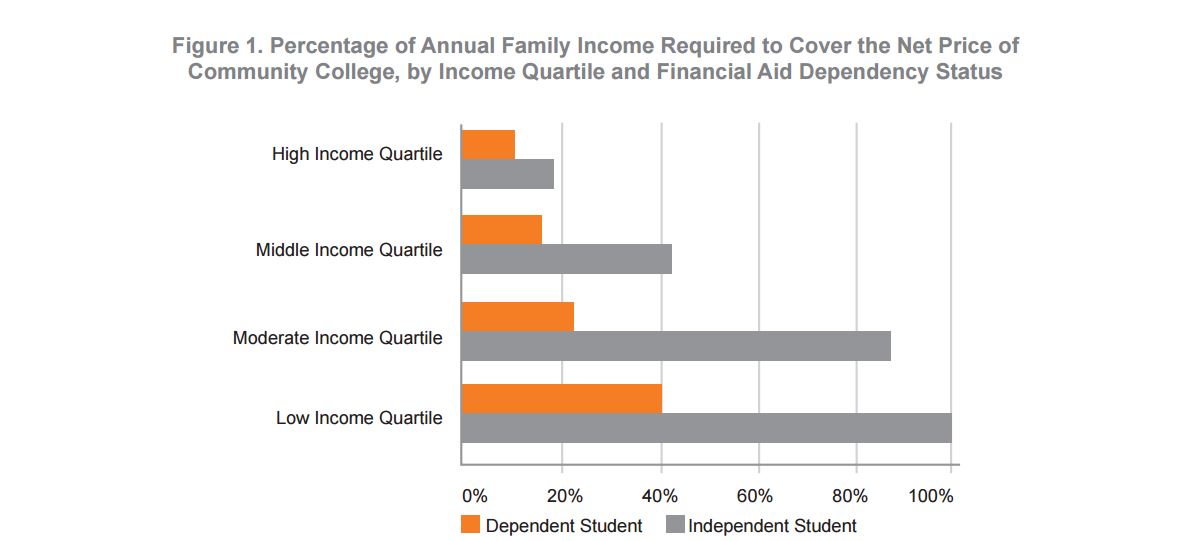
The HOPE Lab at the University of Wisconsin recently published a report detailing the results their survey of more than 4,000 community college students to answer a pressing question: what happens to economically insecure students that enroll in community college and are unable to keep up with the cost? As the cost of higher education increases more quickly than inflation, wages, and need-based financial aid, students are struggling to meet basic food and housing needs, compromising their cognitive functions and their ability to perform well in school.
Survey respondents indicated that they are often unable to afford to eat balanced meals. Over half (52%) of respondents said that they were at least marginally food insecure in the last thirty days, meaning that they felt anxiety over food sufficiency or shortage of food. More than a quarter (28%) of respondents said that they ate smaller meals or skipped meals to save money, and more than 1 in 5 (22%) said that they had gone hungry due to lack of money.
In addition to facing food insecurity, more than half (52%) of all respondents reported that they had experienced at least one form of housing insecurity in the past year. Students struggled most with paying rent on time (22%), or having not fully paid rent (18%) or utility payments (22%) that were past due. Students faced varying levels of housing insecurity, with homelessness being the most severe. More than 1 in 10 (13%) survey respondents indicated that they experienced homelessness at least once in the past year.
These numbers indicate the need for action to be taken to ease the obstacles presented by poverty so that every student has the opportunity for educational success. Since libraries act as a campus hub, homeless students will frequently use them as a place of refuge before, after, or between classes. Librarians and library staff are perfectly positioned to identify students that might be experiencing food and/or housing insecurity and can point them towards campus and community resources for students experiencing economic insecurity.
The full report can be found here. An example of a library guide for students experiencing homelessness can be found here.
Note: This post is part of our series, “The LRS Number.” In this series, we highlight statistics that help tell the story of the 21st-century library.